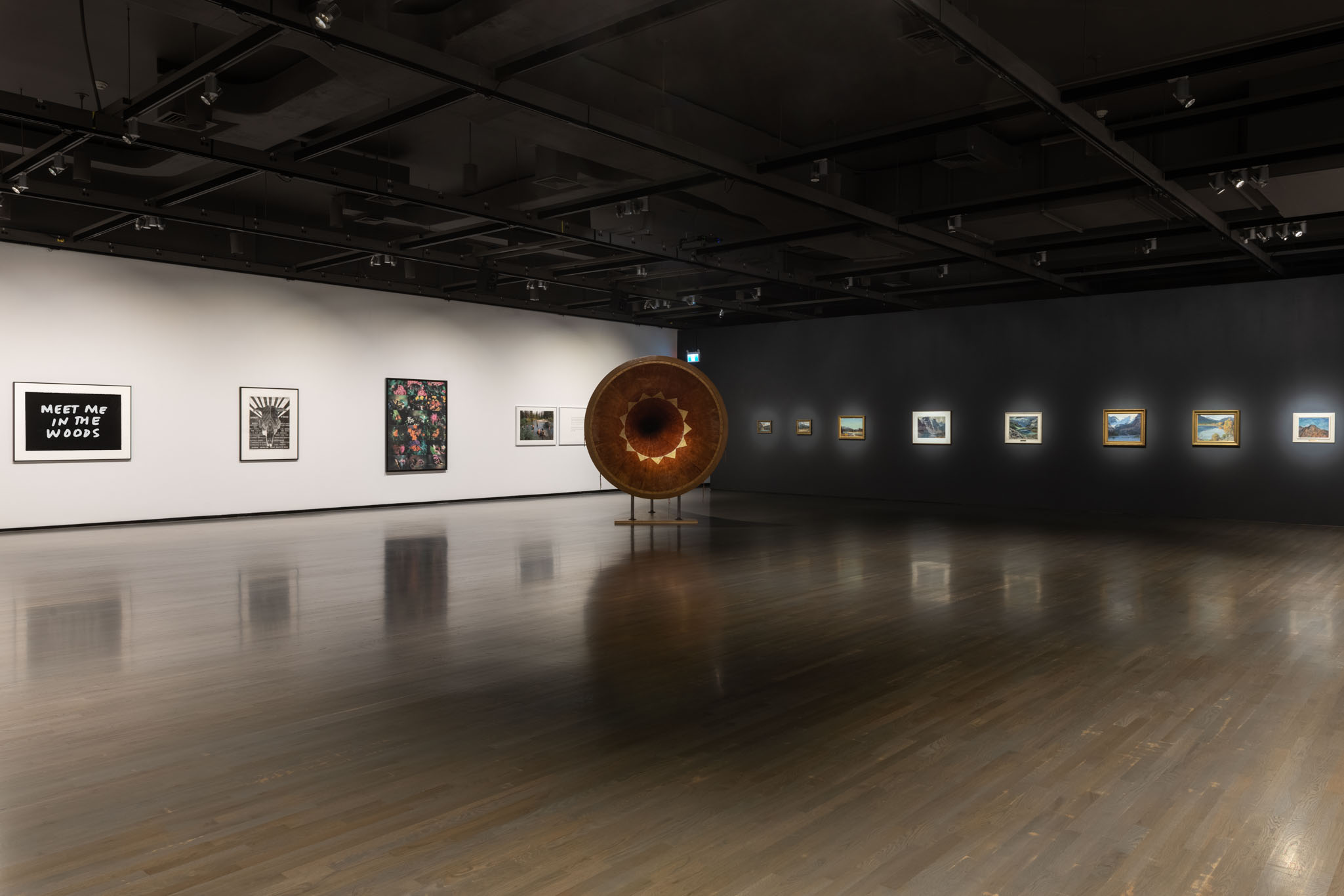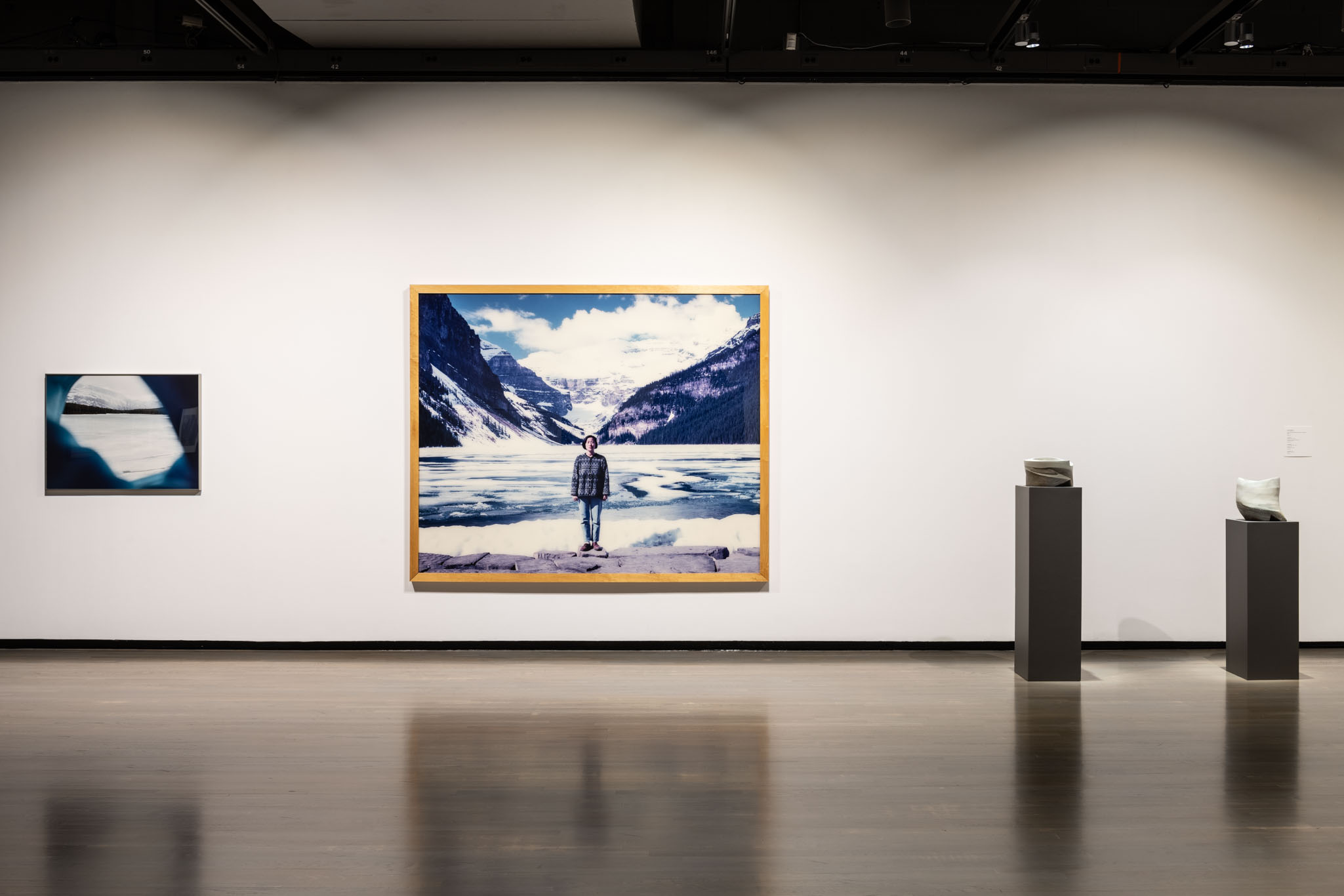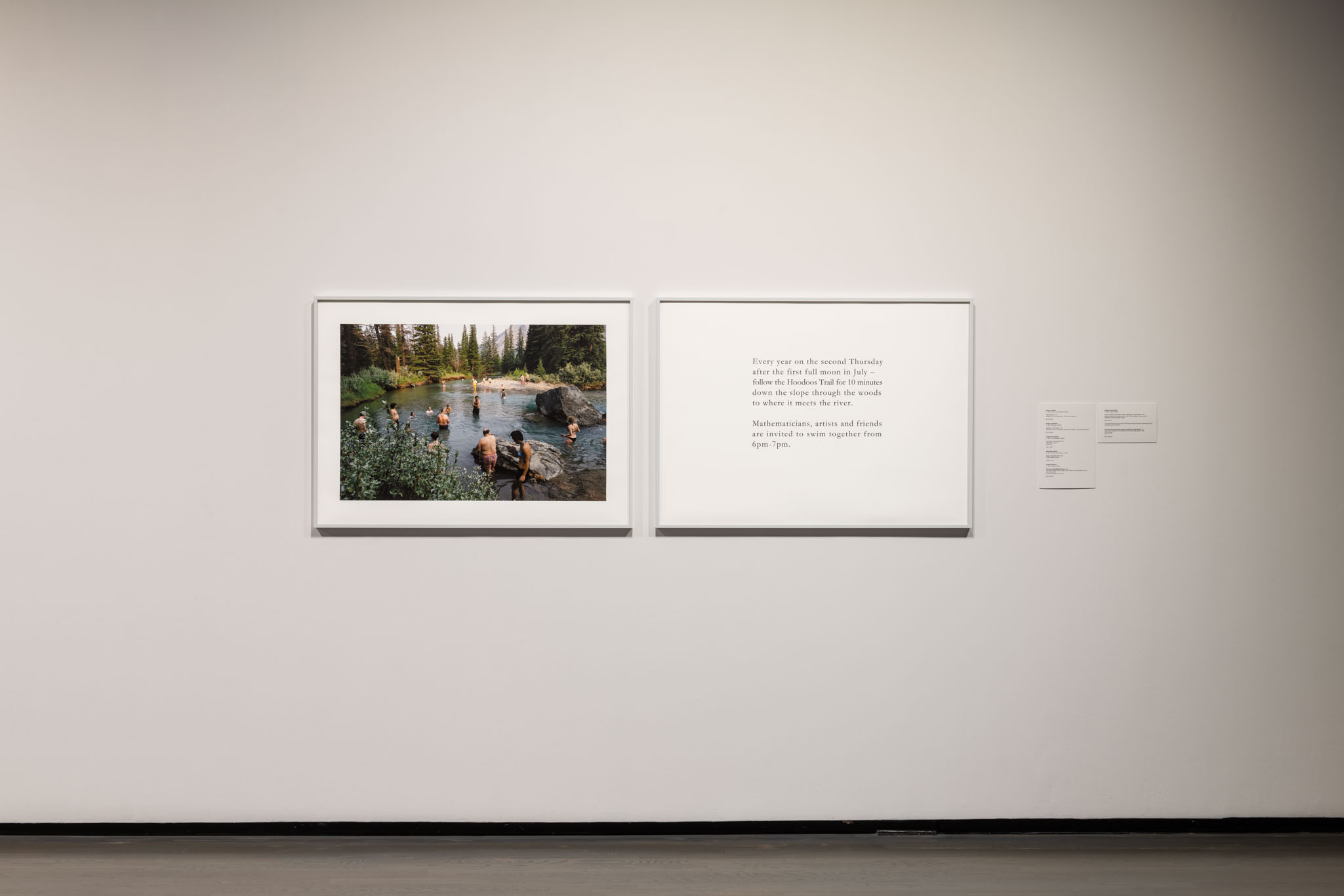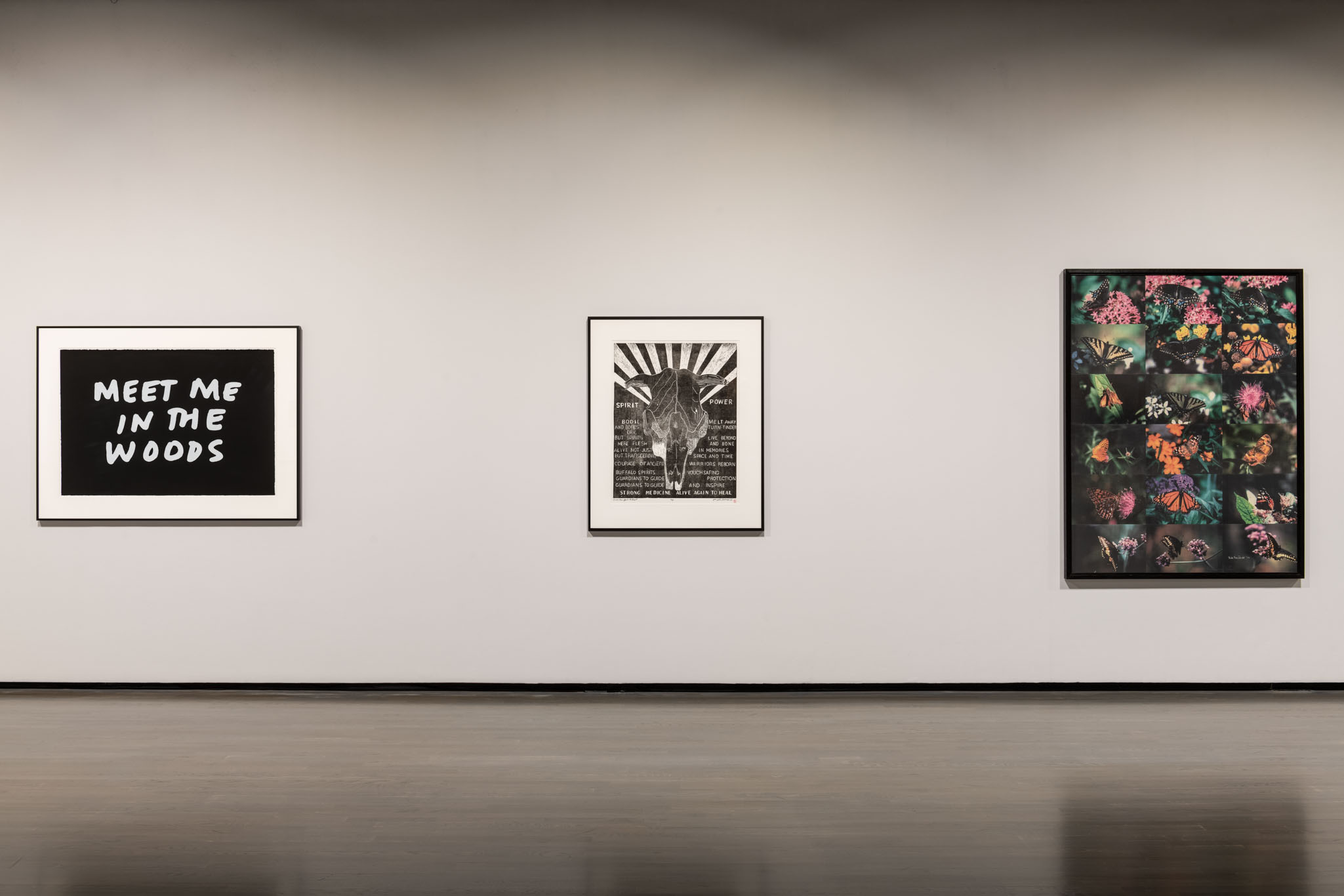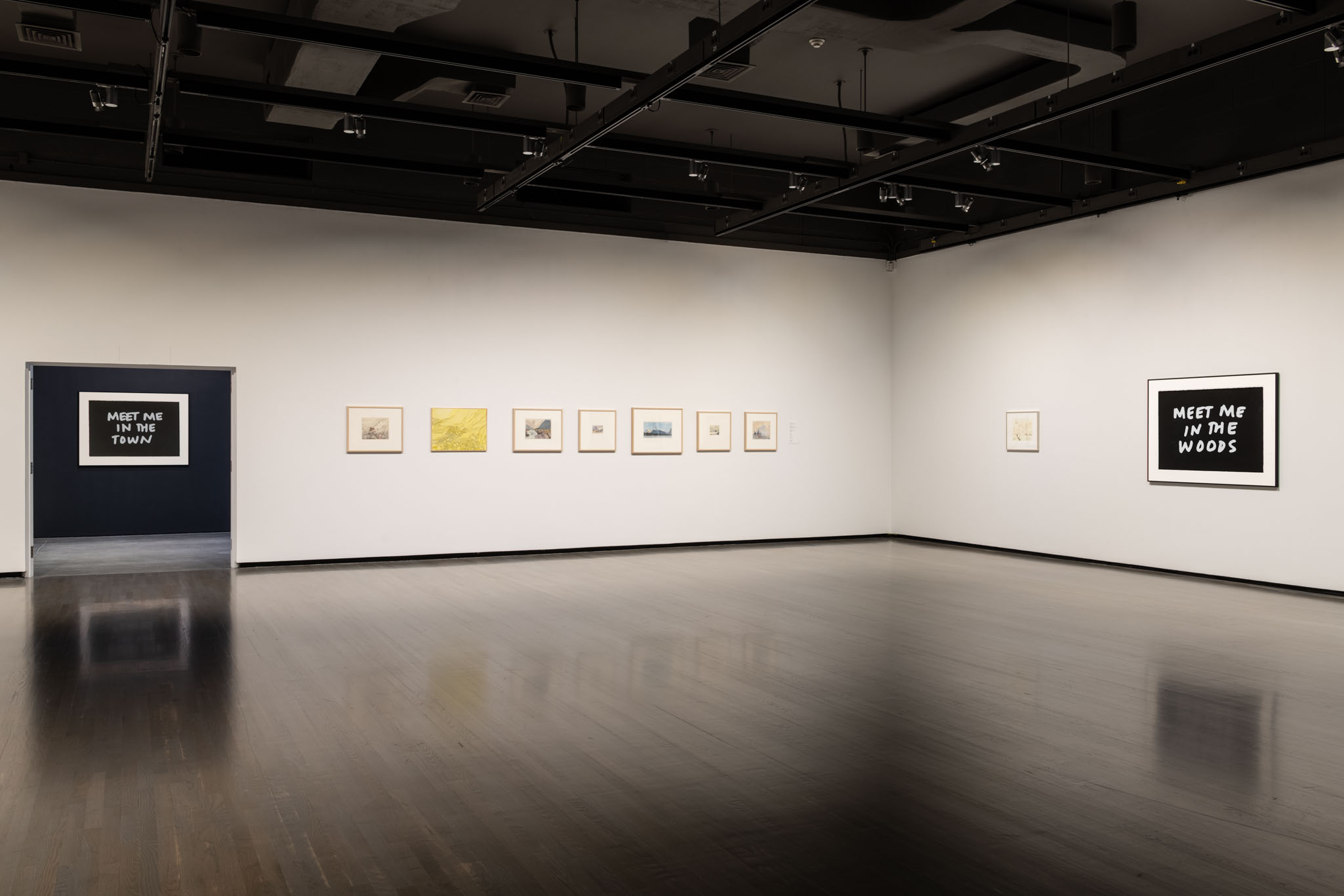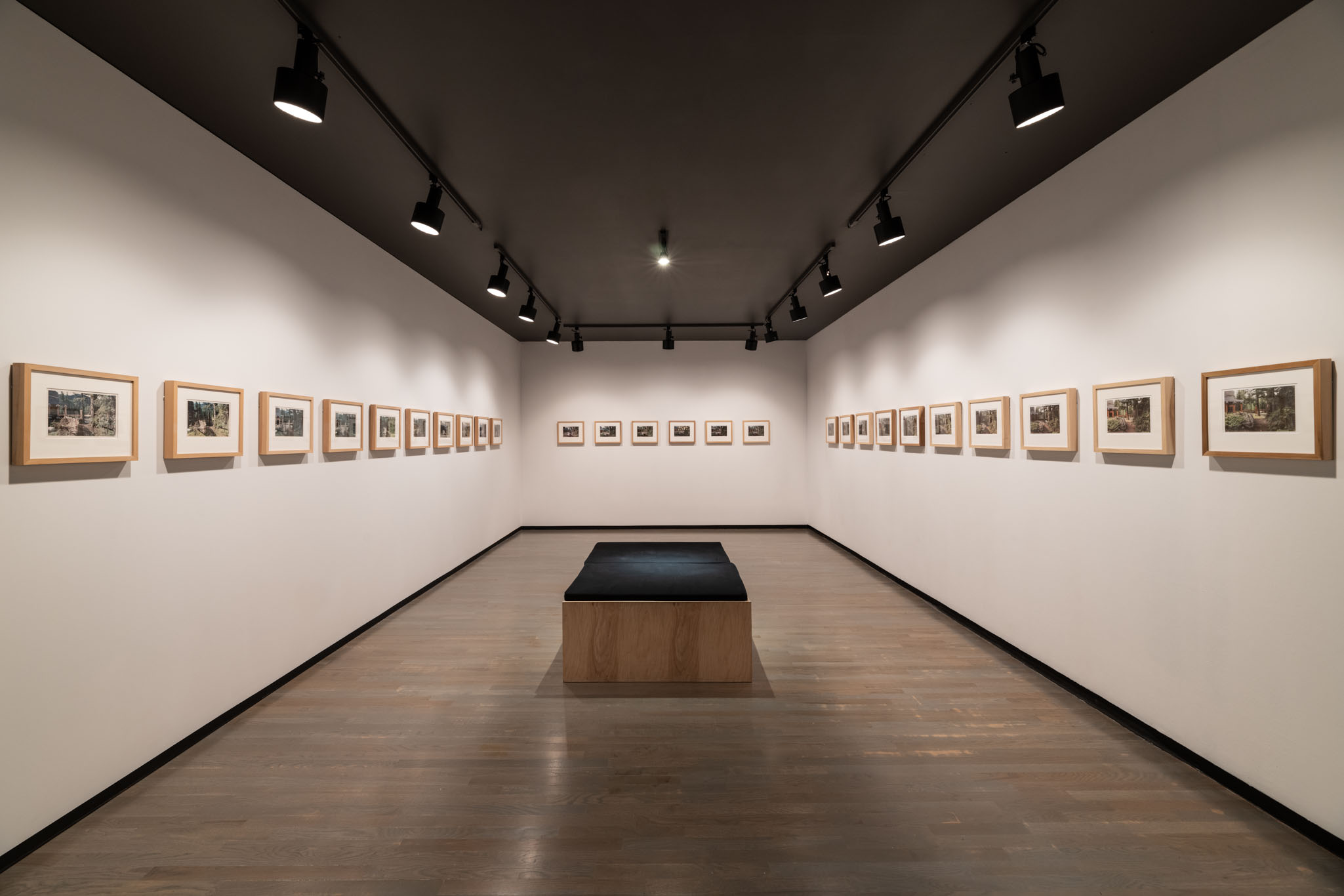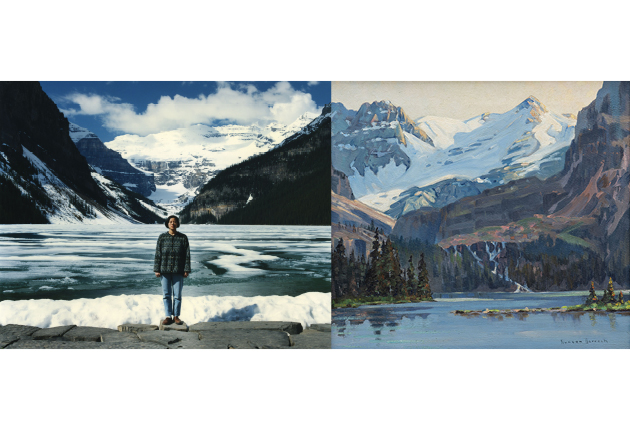
Left: Jin-me Yoon, 'Souvenirs of the Self (Lake Louise)' (1996). Transmounted C-print. Collection of Walter Phillips Gallery, Banff Centre for Arts and Creativity. Accession #P96 0102 P. Right: Duncan Darroch, 'Lake O'Hara' (1928). Oil on canvas. Collection of Walter Phillips Gallery, Banff Centre for Arts and Creativity. Accession #P81 0332 A.
The Shape of an Echo
Selections from the Permanent Collection
This exhibition is now closed.
Exhibition dates: May 6 - December 4, 2022
The Shape of an Echo: Selections from the Permanent Collection assembles works from the 1920s to present that centre on questions of land and its representations, primarily focused on artists’ engagements with Banff National Park. Taking inspiration from Rebecca Belmore’s seminal work, Ayum-ee-aawach Oomama-mowan: Speaking to Their Mother (1991), the exhibition invites consideration of how the experience of an echo through repetition and reflection can allow one to situate themselves in relation to land. Titled in Anishinaabemowin and its English translation and produced by the artist in response to the historic land dispute that has become known as the Oka Crisis, in 1992 Belmore's work was activated at gatherings with Indigenous communities and people across the country who were invited to speak to the land through the sculpture; with the edited recordings included in the sound work of the same name. [1] Moving between image, object, and sound, the selection of works are also intended to open readings of potential echoes within and across the collection; be they between the work of faculty and student; made in response to another's artistic legacy; or which take the form of an instruction that invites re-performance, creating future iterations through its design.
The exhibition includes rarely-exhibited works dating from the early 20th century, many of which were produced by some of the first faculty members at what was then known as the Banff School of Fine Arts. These include works by A.C. Leighton and George Pepper shown alongside influential landscape artists of the period such as Carl Rungius and Frederick Varley. Relationships between early faculty and students are also traced, with a selection of watercolours by Walter J. Phillips paired with those of Lila Dicken, Louella Downing, Doris Livingstone and George Wago who were students during Phillips' tenure as instructor from 1940 to 1959. The work of Janet (Holly) Middleton, a student at Banff School of Fine Arts who eventually went on to teach at the institution until the early 1970s is shown alongside works by her student, George Weber, considering the echo in relation to lineages of intergenerational exchange. Reflective of the legacies of art education and production at Banff Centre but in contrast to the more British and European-influenced depictions of local landscapes are two works by the influential artist and educator Takao Tanabe, head of Visual Arts at Banff Centre from 1973 to 1980; sculptural works by Les Manning who led the ceramics area from 1974 to 1994; and a photographic work by Kahty Chenoweth produced while an artist in residence in 2002.
Other works were selected for their relationship to the public art collection situated across Banff Centre's campus, echoing the outdoor works within the exhibition. Tipping Point (2010) by Brian Jungen was produced in relation to the artist's public sculptures, The ghosts on top of my head (2010-11) and speaks to questions of consumption within the National Park while also humorously subverting the nationalist associations of certain local wildlife such as the beaver. A pair of silkscreen prints by August Klintberg, one reading 'meet me in the woods' and the other, 'meet me in the town,' mirror the language of the public works on campus by the artist; the phrases both ambiguous and playful in terms of whom they are meant to address and the purpose of the meeting. A series of photographs that compose a part of the public artwork, Vessel/Enclosure (1996-2043) by Peter von Tiesenhausen annually document the slow degradation of a sculpture in woven willow branches through its natural exposure to the elements, and are paired with a photograph on loan of a similar sculpture on the artist's property in Alberta's Peace Country that has since returned to the earth. Eastern Butterflys '95 (1995) by Mike MacDonald depicts butterfly species from his place of birth in Nova Scotia and is included for its relation to Butterfly Garden (1999); a living artwork by the artist composed of plants selected for their ability to provide refuge for butterfly species that draws on Mi'kmaq and western scientific forms of knowledge. Human and animal relationships are also centred in Jane Ash Poitras' From New York to Banff (2019), which combines image and text referencing the significance of the buffalo in the artist's Cree worldview.
Echoes also form between works which honour another's artistic legacy. In relationship with MacDonald's Butterfly Garden is Soundtrack for the Radical Love of Butterflies (2018) by T’uy't'tanat-Cease Wyss and Anne Riley, a sound work that honours the late artist's practice alongside Indigenous social justice workers and pollinators. Walter J. Phillips' The Vapours Round the Mountain Curled (1938) is exhibited with Vapours After WJP (1998) by Allan Harding MacKay, a part of a series drawing on the imagery of works by other artists; with the pairing previously included in the exhibition,The Odd Couple (2015). In contrast, Diane Borsato's Swimming with Mathematicians (2018) invites future echoes. Depicting artists and mathematicians who joined together for a swim in the river just off Banff's Hoodoos Trail, the diptych also includes a text piece encouraging subsequent acts of sociality each July.
The selection of works also reflects a number of curatorial echoes that recall past exhibitions at Walter Phillips Gallery and at other institutions in Canada. Jin-me Yoon's iconic Souvenirs of the Self (Lake Louise) (1996), which originally took the form of a postcard when commissioned for the exhibition, Between Views and Points of View (1991), is here shown alongside Ayum-ee-aawach Oomama-mowan: Speaking to Their Mother (1991) that too was commissioned for the exhibition. The Shape of an Echo is also indebted to the exhibition, Speaking about Landscape, Speaking to the Land (2003-2005) curated by Richard Hill at the Art Gallery of Ontario, which brought Belmore's work in conversation with historical Canadian landscape paintings. These varied artistic and curatorial histories highlight Banff Centre as an influential site for artists across generations whose works negotiate meanings of the region's iconic landscapes and their relationship to questions of Indigenous sovereignty, national identity and belonging, human consumption and shifting discourses on art and ecologies.
[1] For analysis of the notion of the echo in relation to the work, Ayum-ee-aawach Oomama-mowan: Speaking to Their Mother see Iris Blake, "Decolonial Echoes: Voicing and Listening in Rebecca Belmore's Sound Performance" in Performance Matters 6.2 (2020): 8–25.
Curated by Jacqueline Bell
